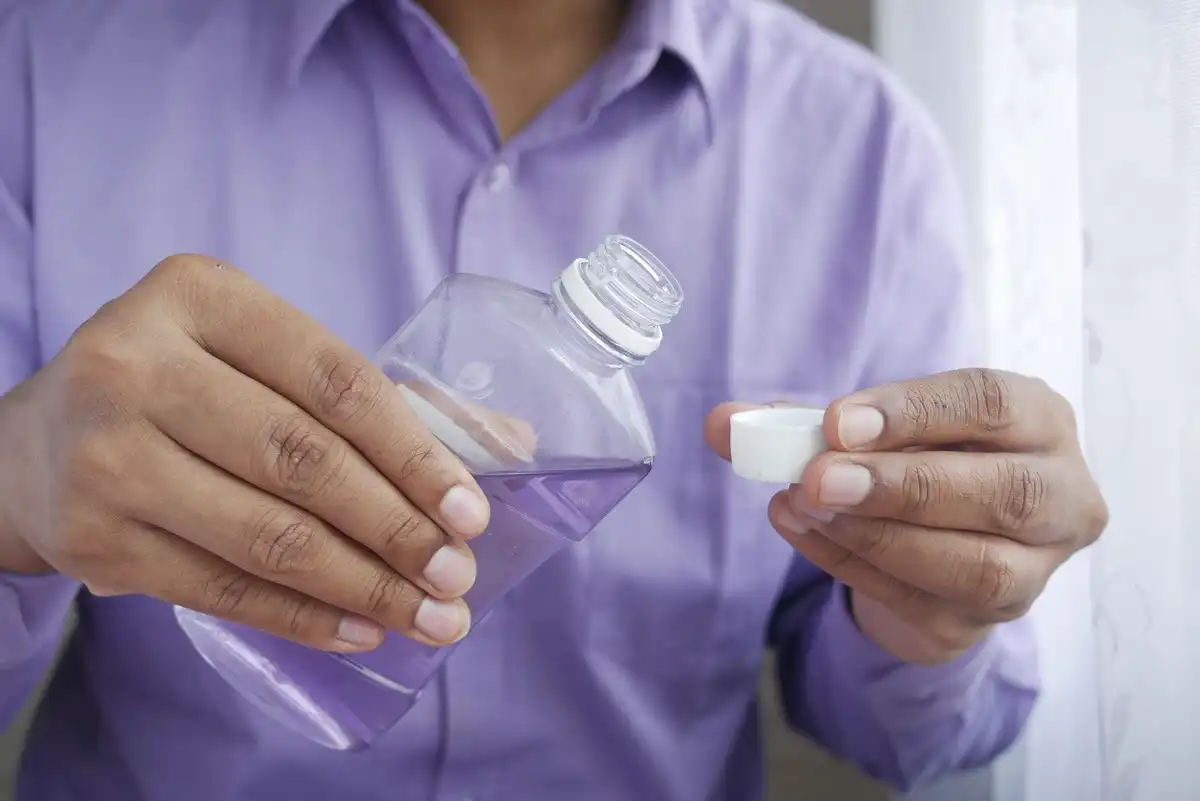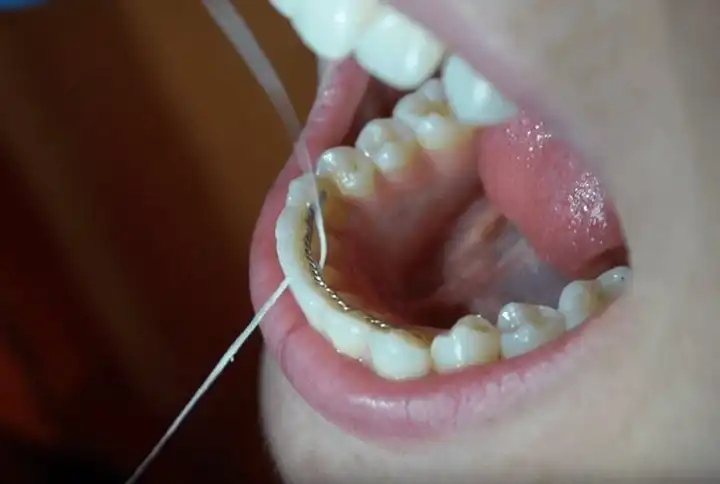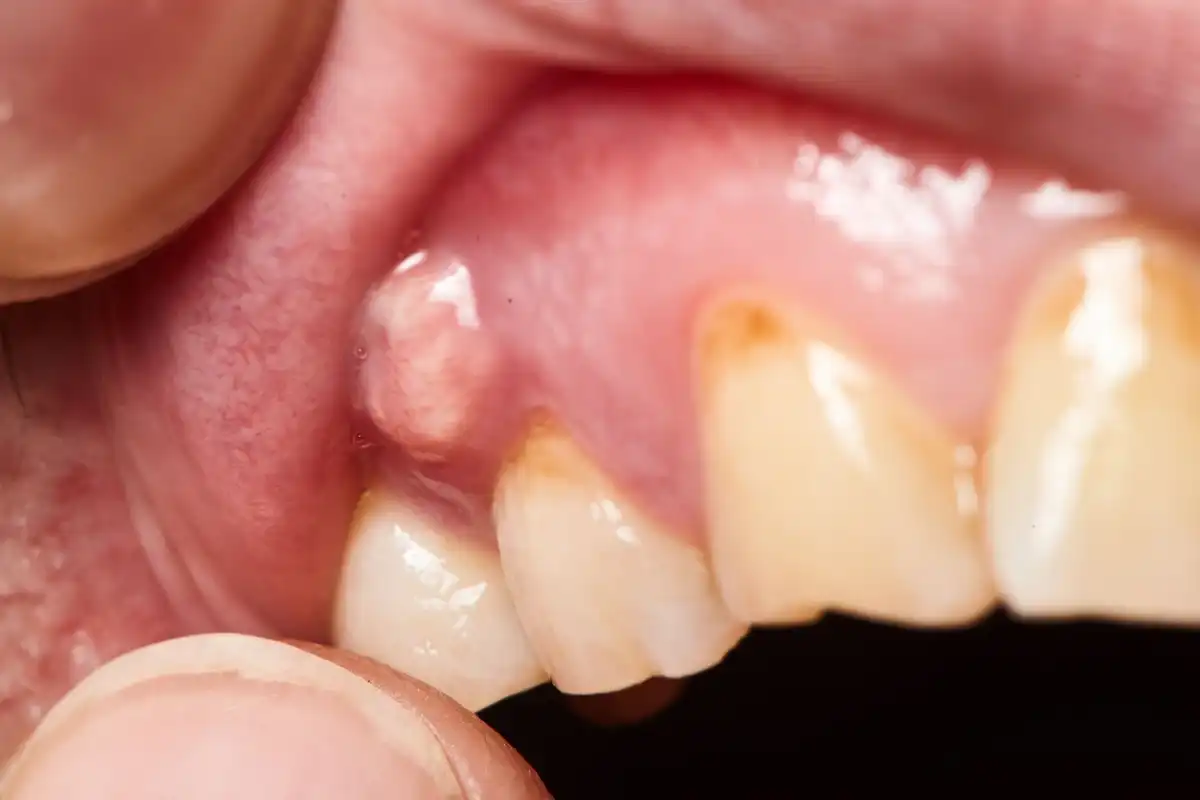Best Mouthwashes for Gums, Cavities & Breath


Walking down the mouthwash aisle at the grocery store can make anybody feel overwhelmed. With dozens of brands, colors, and formulas to choose from (not to mention flavors,) how can you tell which is the best mouthwash to use?
Mouthwash Does Not Replace Brushing And Flossing!
In order for mouthwash to work, it needs to be able to come into complete contact with your teeth and gums. Any plaque buildup or leftover food from that last snack you ate needs to be cleaned off first. Before using mouthwash, always brush and floss your teeth.
Using a mouthrinse does not, I repeat, does not replace brushing and flossing. No matter how hard or many times you swish the rinse around your mouth, it’s not going to get through the sticky biofilm that’s stuck to your teeth. Brushing and flossing physically remove the thick biofilm so that your mouthwash can get right where you need it, as soon as you use it.
If you have trouble flossing, swap it out for a water flosser. Or if there’s an area that always seems to have food stuck between teeth (which, by the way, will have a higher risk of developing gum disease and cavities) then consider using one of those pointed interdental brushes to clean it out.
And finally, don’t zip through your brushing routine cleaning as fast as possible. When you do, you’re more likely to push too hard and the bristles won’t even clean the curved areas since they’re smashed over to one side. Take your time. It only takes two minutes.
Once your teeth and gums are clean, you can use your mouthwash.
Best Overall Antiseptic Mouthwash
I usually recommend Listerine Cool Mint Antiseptic Mouthwash. Listerine is a really popular antiseptic mouthwash brand because it’s proven to work and there are plenty of clinical studies to back up what it does. As a hygienist, I know that it works well for my patients and it’s what I use for my own oral health.

Again, Listerine is color-coded, so the antiseptic blends are going to be blue or green. Added bonus: Listerine has better flavors than they used to; it used to be where all they had was the classic yellow color and the taste wasn’t all that great. But if you’re feeling nostalgic, yellow Listerine is still on store shelves!
PRO: Listerine uses a lot of essential oils plus alcohol, which kill bacteria and help freshen breath.
CON: The bad news is that the alcohol can make your mouth burn.
Best Fluoride Mouthwash
When you need extra help combatting tooth decay, I personally recommend ACT Anticavity Fluoride Rinse Mouthwash. Like Listerine, the ACT brand has a long history of clinical studies and dental research to show that it physically helps make teeth more resistant to cavities.

ACT comes in a million different colors (ok, not really, but there are a lot of them) usually associated with the flavor options available. They all work the same, so just pick the one you like best; for me, it’s cinnamon! Since ACT is something that a lot of dentists and orthodontists recommend for kids, the pink bubble gum is a popular flavor.
PRO: The Cinnamon flavor is bomb! It also prevents cavities and strengthens teeth!
CON: The downside, ACT Anti-cavity doesn’t work for gingivitis or gum disease.
Disclaimer: since anti-cavity mouthwash has fluoride in it, you should not ever swallow it. Just like any vitamin or mineral supplement, your body only needs a specific amount per day. Putting it on the surface of your teeth is perfectly fine, but swallowing it and letting it get into your GI tract for absorption is not ok. It can actually upset your stomach if you get too much.
Best Bad Breath Mouthwash
The best mouthwash for bad breath is going to be one that has added ingredients to help with halitosis. A good choice is Crest Scope Outlast Mouthwash. If you have healthy gums and don’t tend to get cavities, but you do struggle with chronic bad breath, then this rinse is your best go to.

PRO: Crest Scope Outlast Mouthwash can be used on top of your normal brushing and flossing routine to freshen your breath for several hours.
CON: The bad news is that it’s not made for fighting gingivitis/gum disease or cavities. It’s only for how your breath smells; not the health of your teeth and gums.
Best Mouthwash For Gingivitis
Since gingivitis is the earliest form of gum disease, you need to use an antiseptic mouthwash to help with symptoms. Again, I usually recommend the blue and green Listerine.

Since it contains antiseptic ingredients (including alcohol and essential oils) it helps kill the bad bacteria inside of your mouth that are responsible for periodontitis and gum infections.
PRO: Again, you can’t fight gingivitis with mouthwash by itself. You also need to physically clean away the plaque with brushing and flossing. Listerine is, in my opinion, the best mouthwash for gingivitis but only as an adjunct to your typical home routine.
CON: Just remember, it might burn. It’s ok to rinse your mouth after; since it doesn’t have fluoride in it, antiseptic mouthwash doesn’t need to set on your teeth for a long time after you use it.
Best Mouthwash For Cavities
ACT Fluoride rinse is my favorite pick for the best anti-cavity mouthwash. It has over-the-counter fluoride levels that are safe enough for kids in braces to use on a daily basis. It’s effective enough or adults to use too, making it the perfect choice for people who tend to get repeat cavities.

PRO: It is my and favorite mouthwash and it prevents cavities!
CON: On the downside, ACT doesn’t work for gingivitis or gum disease. It’s specifically designed to strengthen teeth and reduce the risk of getting decay. Don’t buy this one if you have healthy teeth but are struggling with the early stages of periodontal disease.
What Type Of Mouthwash Is The Best?
To pick the best mouthwash, we need to first break your options up into two different categories: Antiseptic and Anti-Cavity/Fluoride.
Antiseptic Mouth Rinses
Antiseptic blends are the best mouthwash for bad breath and gum disease. They have antibacterial properties to help with things like swelling and bleeding gums, which consequently also cause bad breath. If you’re worried about your gums or having halitosis, this is the type of rinse you want.
Depending on the brand, Antiseptic mouthwash is usually going to be color coded. So, for instance, Listerine antiseptic mouthwash is typically blue or green. Just be sure to look at the label and “antiseptic” should be there on the front in pretty big print. Does the color matter? No, it just makes it easier to find if you know what you’re looking for.
Antiseptic mouthwashes aren’t for your teeth…they’re for your gums. And since your gums are what help hold your teeth in, the best mouthwash for gingivitis or bad breath is going to be one of these blends (as opposed to anti-cavity mouthrinse.) If you see issues like bleeding when you brush and floss, or red, raised margins along your gumlines, this is the type of mouthrinse that you need to get.
Since oral bacteria and infected gum tissues are the two biggest factors when it comes to bad breath, you need a rinse that will help control how many germs you have inside your mouth. Antiseptics tend to cause a bit of a stinging or burning sensation, so it’s like you can practically feel them working inside of your mouth! Some brands carry a 0% alcohol blend, but they might still cause some tingling. If you have a sensitive mouth this could prove to be an issue, but some people like the burning feeling because they know it’s working.
Generally, you want to use antiseptic mouth rinse in the morning, instead of at night. Since most antiseptics contain alcohol, they tend to dry your mouth out. Most of us have dryer mouths at night anyway, so an antiseptic can give you that cottonmouth feel if you’re not careful. But if you’re actively struggling with gum disease, you may want to go ahead and use it twice a day to make your oral hygiene routine more effective.
Anti-Cavity/Fluoride Mouth Rinses
If you have a history of frequent cavities, are cavity-prone, have dry mouth (xerostomia,) or you’ve got a kid in braces, then the rinse you want to buy is an anti-cavity mouthwash. These formulas are also called fluoride mouthwash, because it’s the fluoride inside of them that provides the anti-cavity properties.
When you rinse with an anti-cavity mouthwash, you’re distributing fluoride all over your teeth. Since it’s in a liquid form, it’s easier to get across your entire mouth. So, when you rinse with it after you brush and floss, it’s easier for the fluoride to come into contact with more surfaces (since there’s no plaque in the way!)
People with dry mouth who have good oral hygiene are also at a higher risk of getting cavities. Since there’s not a lot of saliva on their teeth, acids can erode their enamel more quickly that someone who doesn’t have xerostomia. That’s why using a fluoride mouthwash before going to bed is so helpful, as it’s the time your saliva glands tend to shut down and stop lubricating your mouth.
If you don’t want to use your mouthwash at night, be sure to wait at least 30 minutes before rinsing your mouth, drinking water, or eating anything. A half hour is the optimal length of time that the fluoride needs to soak into your tooth enamel.
Fluoride mouthwash helps prevent cavities by remineralizing your enamel that’s starting to weaken or erode. As long as you use it regularly and before physical cavities form, anti-cavity rinses can lower your chances of developing tooth decay.
For people with braces, rinsing with a fluoride mouthrinse every day can help prevent the “white circles” that are visible on your teeth once your orthodontic appliances come off! Cleaning around brackets and wires can be really hard to do, which is why so many people get the demineralized scarring on their teeth after the fact. Using fluoride rinse on a regular basis can help counteract the loss of minerals in your teeth so there aren’t lines and circles when your brackets come off.
Is fluoride mouthwash safe to use twice per day? Absolutely! In fact, more power to you. It’s not a prescription-strength fluoride, so the lower levels are completely safe enough to use the product morning and night. Keep using your regular fluoride toothpaste, too.
Anti-cavity toothpastes are for your tooth enamel, not your gums. So, if you tend to get swelling and bleeding (symptoms of gum disease) then a fluoride toothpaste isn’t going to help any with your gum infection.
Can You Mix Your Mouthwash?
No! Just don’t do it. Your mouthwash is formulated with specific ingredients to help it be as effective as possible. Mixing two different types of rinses could potentially cancel out the ingredients in the other one.
If you struggle with both gingivitis and tooth decay, the better opportunity would be to use an antiseptic mouthwash in the morning and then a fluoride mouthwash at night before bed.
Fortunately, picking out two different mouthwashes at the grocery store will be a lot easier now that you know what you’re looking for.
So Which Is The Best Mouthwash For Me?
Before picking the best mouthwash, remember, there are two types: antiseptic and anti-cavity. Antiseptics are designed for your gums (and the bacteria that cause bad breath) while fluoride rinses are for lowering your chances of getting cavities. If you struggle with halitosis but have healthy teeth and gums, the best mouthwash for bad breath would be something like Scope (which is neither antiseptic nor fluoride.)
Always remember that mouthwash is an adjunct you use on top of brushing and flossing. It won’t rinse away sticky buildup, so you need to physically clean it off (with a brush or floss) before rinsing.

Make your inbox smile!
Subscribe





